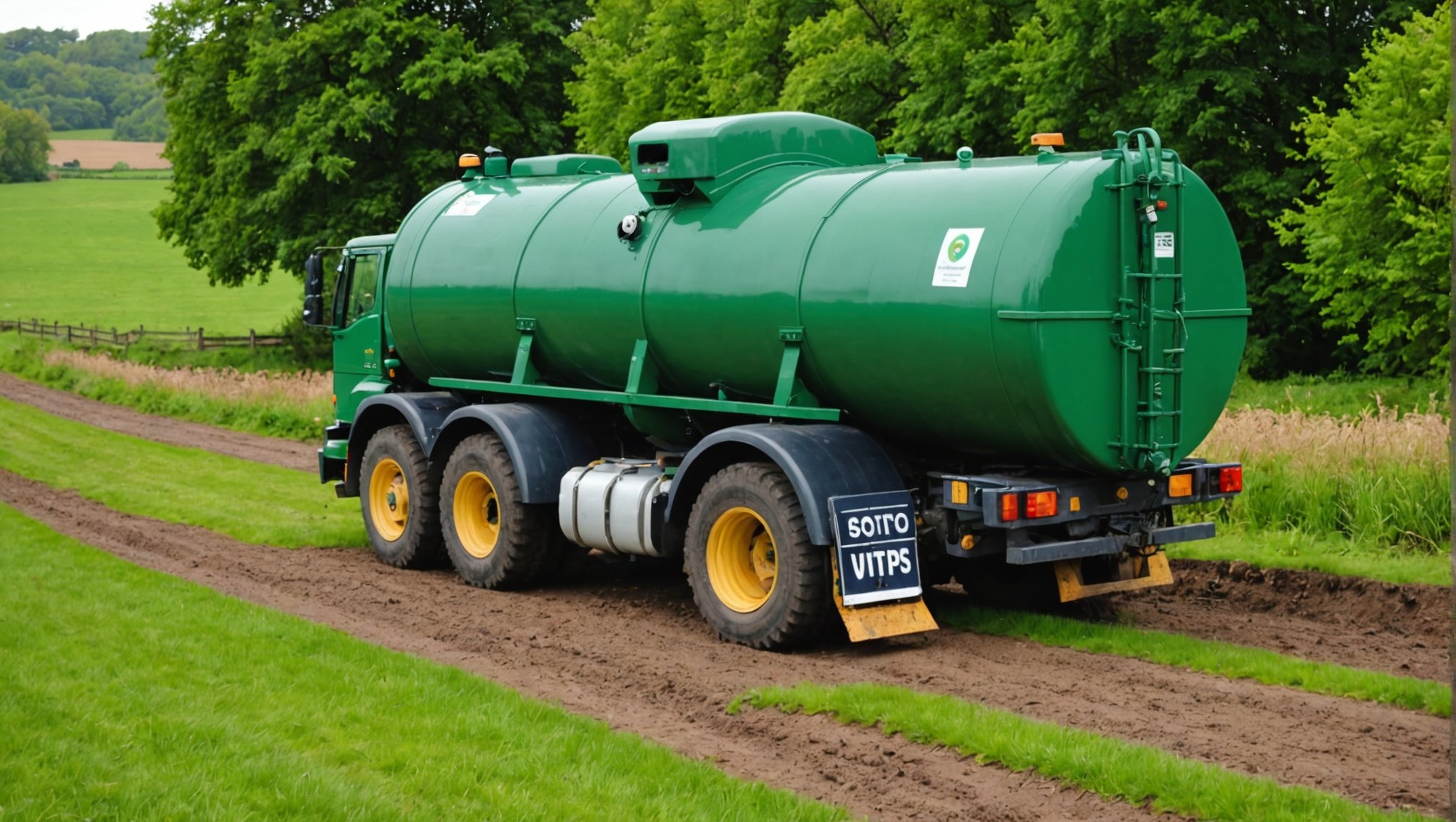Maintaining a septic tank in rural UK settings is often overlooked, yet it's essential for both environmental health and household efficiency. Neglect can lead to costly repairs and unpleasant odours. Proper upkeep involves regular inspections, mindful water usage, and understanding the tank's capacity. This guide offers practical tips to help ensure your septic system runs smoothly, enhancing both your living space and the surrounding area. Equip yourself with the knowledge to avoid common pitfalls and prolong the life of your septic tank.
Introduction to Rural UK Septic Tank Maintenance
In rural UK settings, septic tanks are a vital component of waste management for many homeowners. These systems, often located away from centralised sewage networks, require diligent attention to ensure they function effectively. Proper septic tank maintenance is not just about keeping the system running smoothly; it is also crucial for compliance with local regulations.
Sujet a lire : Embrace elegance: choosing your luxury antique clock
Septic tanks in rural areas are typically designed to handle household wastewater, treating it on-site. However, without regular maintenance, these systems can fail, leading to unpleasant and costly issues. Homeowners must be proactive in scheduling inspections and pumping services to prevent blockages and overflows. Regular checks help in identifying potential problems early, ensuring the longevity and efficiency of the septic system.
Local regulations in the UK mandate specific guidelines for septic tank management. These rules are in place to protect the environment and public health. Homeowners are responsible for understanding and adhering to these regulations, which may include limits on discharge and requirements for regular maintenance checks.
A lire en complément : Effective Strategies to Combat Limescale in Hard Water Areas of the UK
By prioritising septic tank maintenance, rural UK homeowners can avoid disruptions, ensure compliance, and contribute to a healthier environment.
Essential Maintenance Tips
Maintaining a septic tank in rural UK settings involves a few essential practices to ensure its optimal functionality. Firstly, adhering to a regular pumping and cleaning schedule is crucial. Generally, tanks should be pumped every three to five years, depending on usage and household size. This routine prevents solids from accumulating and potentially causing blockages.
Monitoring the tank levels and condition is another key aspect of septic tank upkeep. Regular inspections can help identify issues like leaks or cracks, which, if left unattended, could lead to system failures. Using a simple dipstick or monitoring system can provide valuable insights into the tank's health.
To avoid overloading the system, homeowners should adopt certain household practices. For instance, limiting the use of water-heavy appliances, such as washing machines and dishwashers, can prevent excess water from entering the system at once. It's also advisable to avoid flushing non-biodegradable items, such as wipes or sanitary products, as they can cause clogs.
By following these septic tank maintenance tips, rural homeowners can ensure their systems remain efficient and compliant with regulations, ultimately contributing to a more sustainable living environment.
Frequency of Inspections
In rural homes, septic tank inspections are vital to maintaining a functional and compliant system. The maintenance frequency largely depends on factors such as tank size and household usage. Generally, smaller tanks or those serving larger families require more frequent inspections, typically every one to two years. This schedule helps in identifying potential issues before they escalate into costly repairs.
Signs indicating the need for immediate inspection include slow drains, unpleasant odours, and unusually lush patches of grass around the tank area. These symptoms often suggest a blockage or leak, necessitating prompt attention to prevent further damage and ensure the system's efficiency.
Seasonal factors also play a significant role in determining inspection frequency. For instance, during wetter months, the ground can become saturated, affecting the tank's drainage capabilities. In such cases, more frequent checks might be necessary to avoid overflow or system failure. Conversely, during dry spells, the risk of tank issues may decrease, allowing for a longer interval between inspections.
By understanding these factors, rural homeowners can better plan their septic tank inspections, ensuring their systems remain in optimal condition and compliant with local regulations.
Common Issues Faced by Septic Tank Owners
Owning a septic tank involves being vigilant about potential problems that can arise. Identifying these issues early is crucial to avoid costly repairs and maintain system efficiency. Common issues include blockages, leaks, and unpleasant odours. Blockages often occur when non-biodegradable items are flushed, leading to clogs in the system. Leaks might result from cracks in the tank or faulty seals, which can cause wastewater to seep into the surrounding soil.
Neglecting these problem signs can have serious consequences. For instance, ignoring a blockage can lead to system overflow, damaging property and posing health risks. Similarly, untreated leaks can contaminate groundwater, impacting the local environment.
For minor issues, homeowners can employ simple troubleshooting methods. If slow drains or odours are noticed, checking for and removing blockages is a practical first step. Regularly inspecting the tank for visible cracks or signs of wear can prevent leaks from worsening. Additionally, using natural bacterial additives can help maintain a healthy balance inside the tank, reducing the risk of blockages.
By understanding and addressing these septic tank problems, homeowners can ensure their systems remain functional and environmentally safe.
DIY Maintenance Solutions
For rural homeowners, DIY septic tank maintenance can be a practical and cost-effective solution. Understanding the basics of self-help maintenance can significantly extend the life of your system. Here’s a step-by-step guide to help you get started.
Step 1: Begin by gathering essential tools and materials. You'll need a sturdy pair of gloves, a flashlight, a long stick or dipstick for measuring sludge levels, and a garden hose. These items are crucial for performing basic checks and cleaning tasks.
Step 2: Ensure safety precautions are in place. Always wear protective gear, such as gloves and goggles, to prevent contact with harmful bacteria. Never work alone; having someone nearby can be crucial in case of emergencies.
Step 3: Regularly check the sludge and scum levels in the tank using the dipstick. This allows you to determine when professional pumping is necessary, preventing overflow and blockages.
Step 4: Inspect the tank area for any signs of leaks or damage. Look for wet patches or unusual plant growth, which might indicate a leak.
By following these steps, rural homeowners can perform basic DIY septic tank maintenance, ensuring their systems remain efficient and compliant with local regulations.
When to Seek Professional Help
In rural settings, knowing when to call for professional septic services can prevent minor issues from escalating into major problems. Certain indicators necessitate expert help. If you notice persistent foul odours, slow drainage, or sewage backups, it's time to contact professionals. These signs often point to underlying issues that require specialised equipment and expertise to resolve.
Types of Professional Services
Rural areas offer a variety of professional septic services. These include comprehensive inspections, regular pumping, and emergency repairs. Professionals can also conduct soil tests and provide advice on system upgrades or replacements when necessary. Their expertise ensures that your septic system operates efficiently and remains compliant with local regulations.
Choosing a Reputable Provider
Selecting a trustworthy septic service provider is crucial. Look for companies with positive reviews and proven experience in rural systems. Ensure they are licensed and insured, offering guarantees on their work. A reputable provider will conduct a thorough assessment and provide clear explanations and recommendations.
By understanding these indicators and the available services, rural homeowners can effectively manage their septic systems, ensuring longevity and compliance. Prioritising professional help when needed can save time, money, and the environment from potential harm.
UK-Specific Regulations and Compliance
Understanding septic tank regulations is crucial for rural UK homeowners. These regulations are designed to protect the environment and public health by ensuring that septic systems operate efficiently. In the UK, compliance involves adhering to several environmental laws that govern the installation, maintenance, and discharge of septic tanks.
Overview of Regulations
The UK has specific guidelines for septic tank management, including the General Binding Rules. These rules stipulate that homeowners must ensure their septic tanks are regularly maintained and do not cause pollution. Tanks should be installed and operated in a way that prevents leakage and contamination of local water sources.
Importance of Compliance
Compliance with UK septic tank regulations is vital to avoid legal issues and protect the environment. Non-compliance can lead to significant penalties, including fines and mandatory system upgrades. Moreover, it poses a risk to local ecosystems by potentially contaminating water supplies.
Potential Penalties and Impact
Failure to comply with these regulations can result in severe consequences. Homeowners may face fines or be required to take corrective actions, such as replacing or upgrading their septic systems. Moreover, non-compliance can lead to environmental degradation, affecting local wildlife and water quality.
Environmental Impacts of Poor Maintenance
Poorly maintained septic tanks can have significant environmental impacts, affecting local ecosystems and contributing to pollution. When a septic system fails, untreated wastewater can seep into the surrounding soil and groundwater, leading to contamination. This pollution poses risks to both human health and the environment, as it can introduce harmful bacteria and nutrients into water bodies, disrupting aquatic life and ecosystems.
To minimise the environmental impact of septic tanks, homeowners should adopt sustainable management practices. Regular inspections and timely maintenance can prevent leaks and overflows, ensuring that the system functions efficiently. Implementing water conservation strategies, such as reducing water usage and avoiding non-biodegradable waste, helps maintain the balance within the tank, reducing the risk of blockages and failures.
The benefits of sustainable septic tank management extend beyond environmental protection. By maintaining a well-functioning system, homeowners can avoid costly repairs and potential fines for non-compliance with regulations. Moreover, a sustainable approach supports the long-term health of local ecosystems, preserving biodiversity and water quality.
In summary, prioritising the maintenance of septic systems is crucial for safeguarding the environment and ensuring the sustainability of rural communities.
Troubleshooting Septic Tank Problems
When faced with septic tank issues, septic tank troubleshooting can provide quick solutions to common problems. Identifying these problems early can prevent them from escalating into significant repairs.
Quick Fixes for Common Problems
For minor issues, such as slow drainage or unpleasant odours, simple quick fixes can be effective. Begin by checking for blockages in the system. Often, unclogging drains or removing foreign objects can resolve these problems. If odours persist, consider using natural bacterial additives to restore balance within the tank.
Checklist for Identifying Issues
Before calling a professional, use a checklist to evaluate the situation:
- Inspect for visible leaks or wet patches around the tank.
- Check for unusual plant growth, which may indicate a leak.
- Listen for gurgling sounds in the plumbing, suggesting a blockage.
Importance of Regular Monitoring
Regular monitoring is crucial in preventing major issues. By routinely inspecting the septic system, homeowners can identify potential problems early. This proactive approach reduces the risk of system failure and costly repairs. Regular checks also ensure compliance with local regulations, protecting both the environment and public health.
Conclusion and Best Practices for Ongoing Maintenance
For rural UK homeowners, embracing ongoing maintenance and adhering to septic tank best practices is essential for ensuring efficient waste management systems. Regular attention to your septic tank not only prolongs its lifespan but also prevents costly repairs and environmental issues.
Recap of Essential Practices
To maintain a healthy septic system, it's crucial to follow a few key practices:
- Schedule regular inspections and pumping every three to five years.
- Monitor tank levels and conditions frequently.
- Limit water-heavy appliance usage and avoid flushing non-biodegradable items.
Long-Term Benefits
Consistent ongoing maintenance offers numerous long-term benefits. It enhances system efficiency, reduces the risk of failures, and ensures compliance with local regulations. Moreover, a well-maintained septic tank contributes to a healthier environment by minimising pollution risks.
Stay Informed
It's vital for homeowners to stay informed about changes in regulations and evolving septic tank best practices. Engaging with local authorities and environmental agencies can provide valuable insights into new guidelines and innovative maintenance techniques. By prioritising ongoing maintenance, rural UK homeowners can secure the functionality and longevity of their septic systems, promoting sustainable living.
















